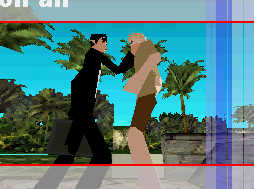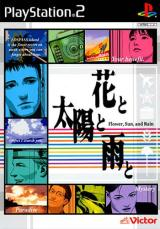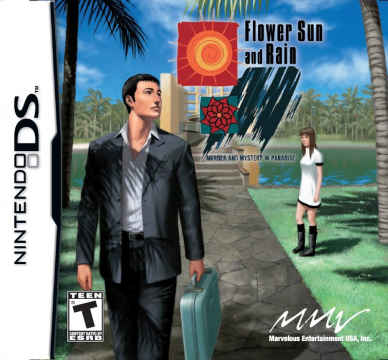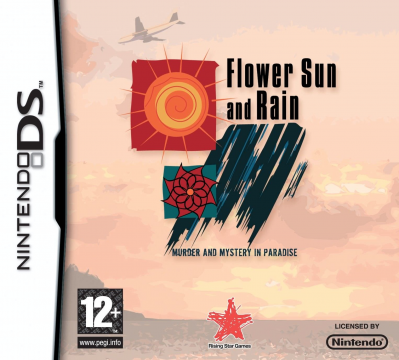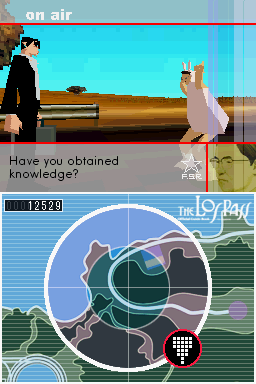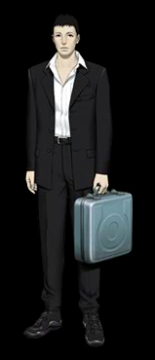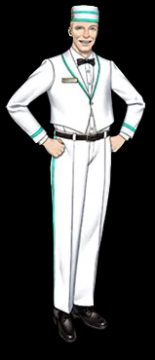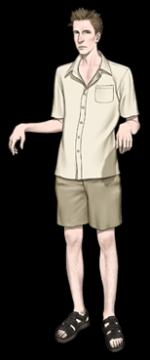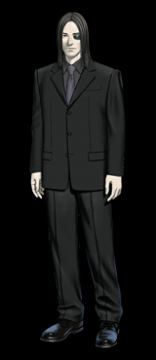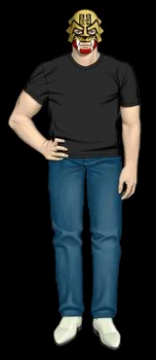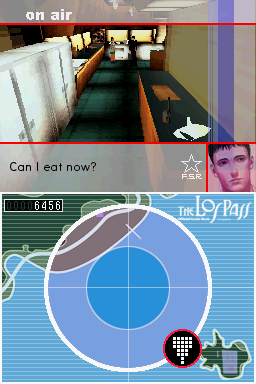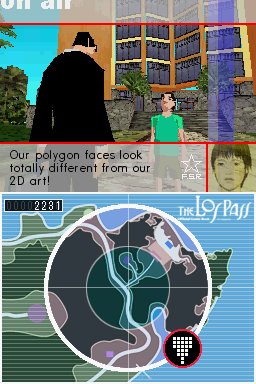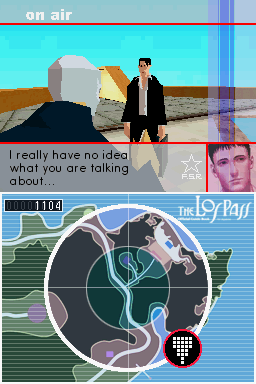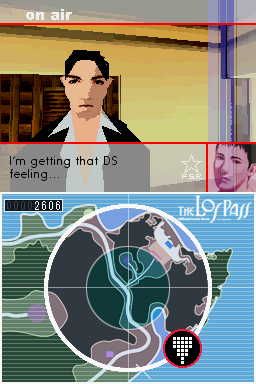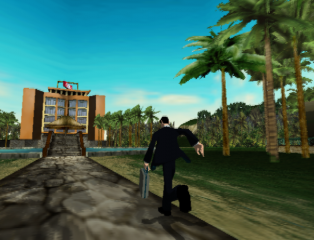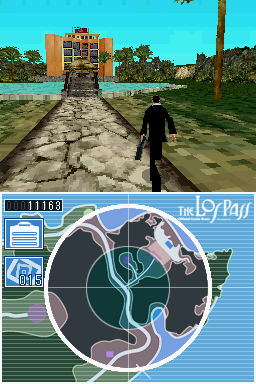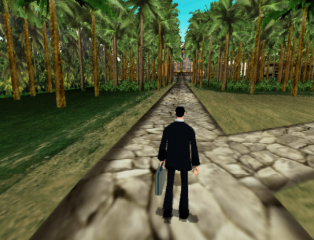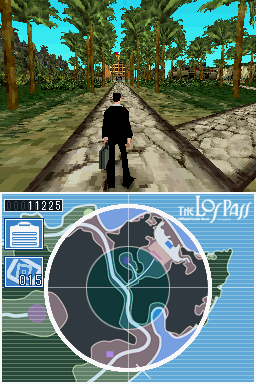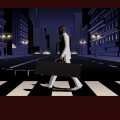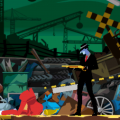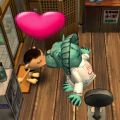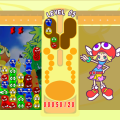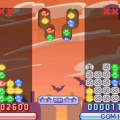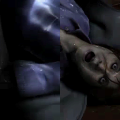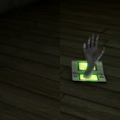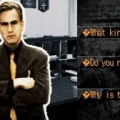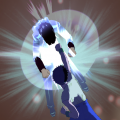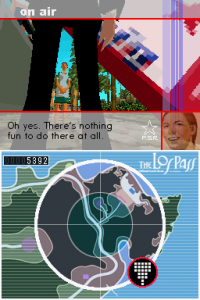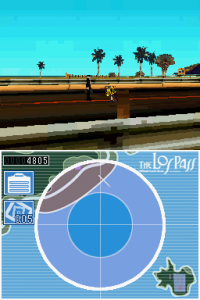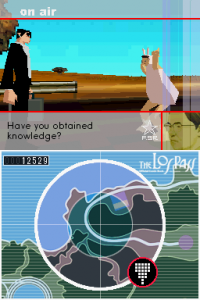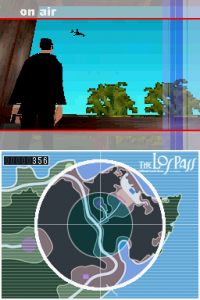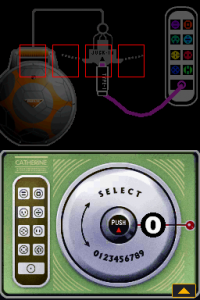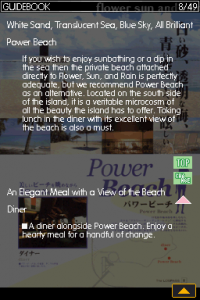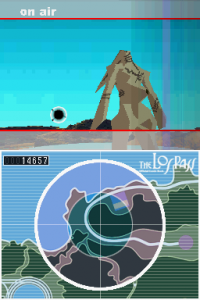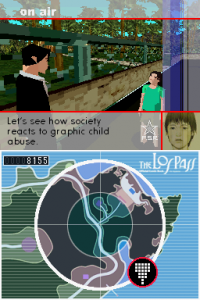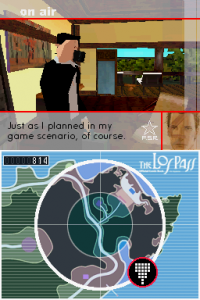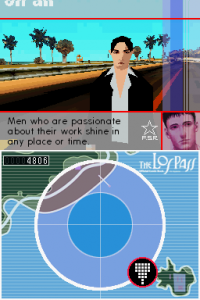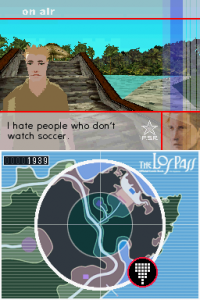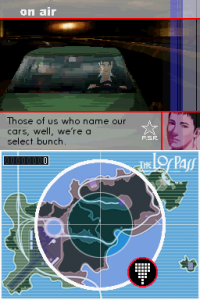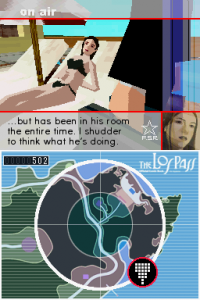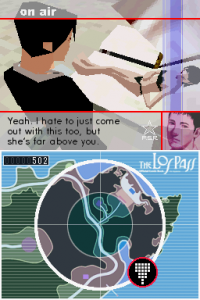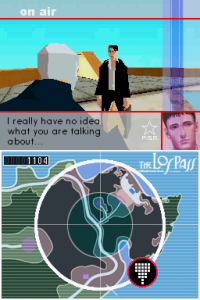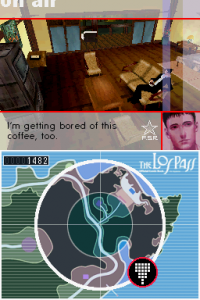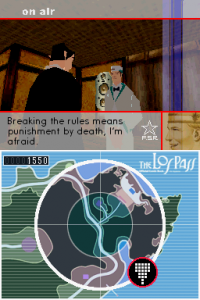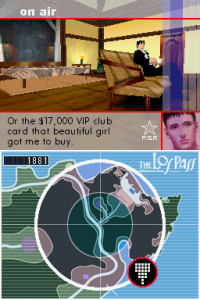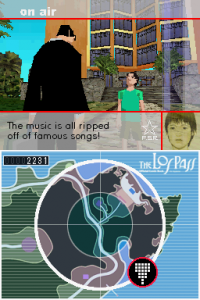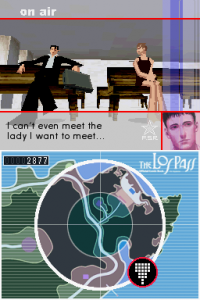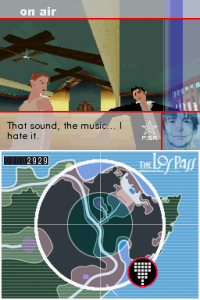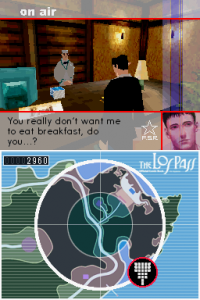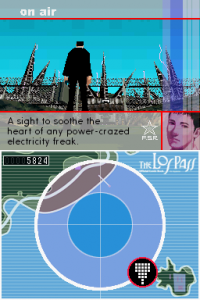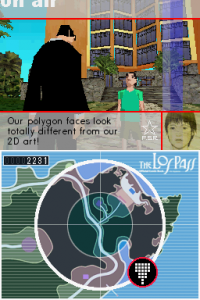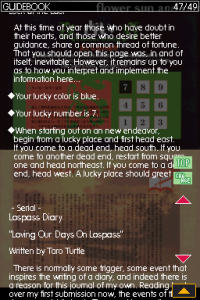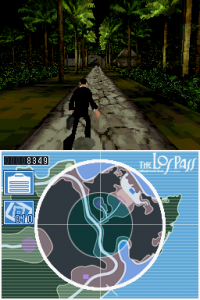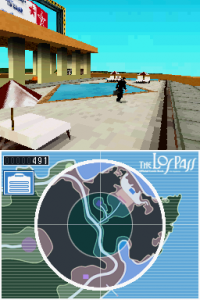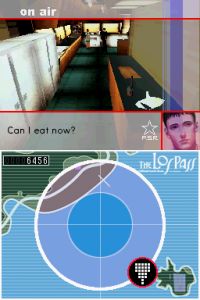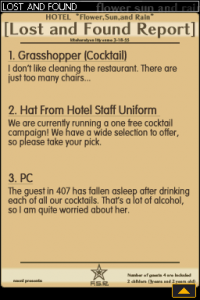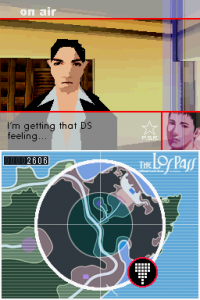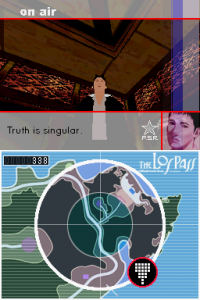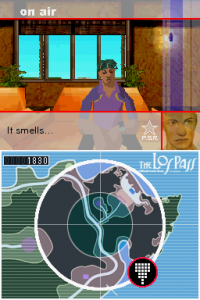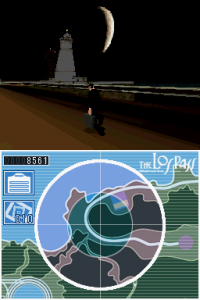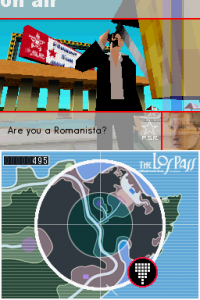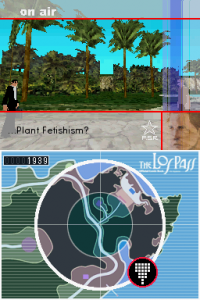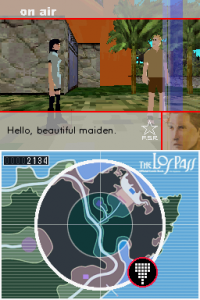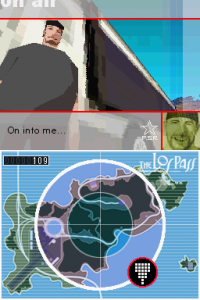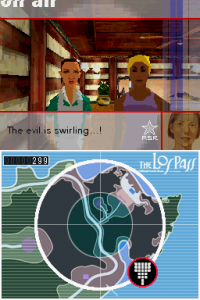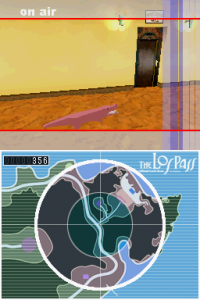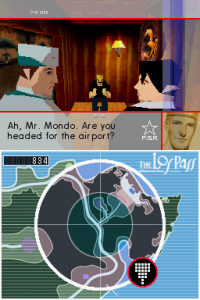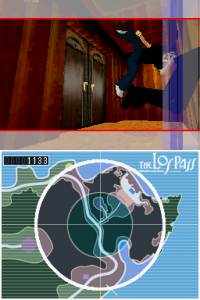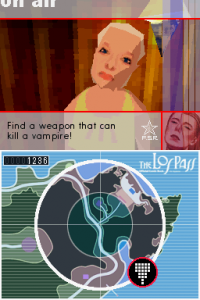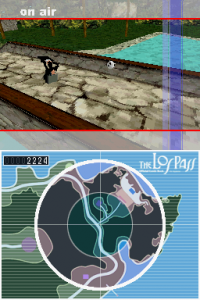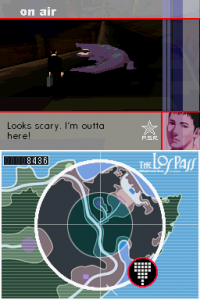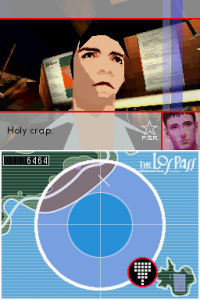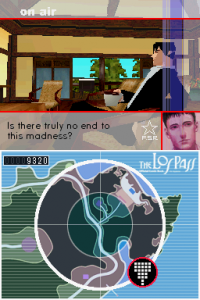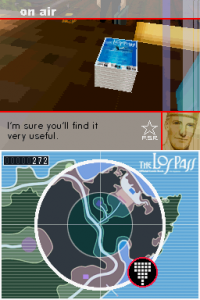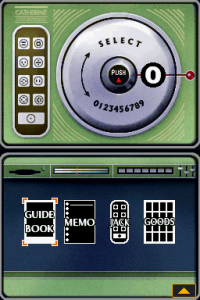In 2008, Suda51 was enjoying the height of his popularity. 2005’s cult classic Killer 7 received much acclaim, and built up a western fanbase for his punk-rock games that were different from anything else on the market. Because of this new fanbase in the west and an offer made to Suda by Yasuhiro Wada (most famous for producing the original Harvest Moon), plans were made to develop remakes of the first two games made by Suda51’s studio Grasshopper Manufacture, The Silver Case and Flower, Sun, and Rain, for the Nintendo DS. While the DS remake of The Silver Case never released because Suda believed the game was too antiquated, Flower, Sun, and Rain: Murder and Mystery in Paradise, developed by h.a.n.d, released in 2008 in Europe and 2009 in America. Although Suda51 was not involved with direct production of the remake, he requested that it would use the functions of the DS in gameplay, and Yoshifumi Hashimoto, a producer at Marvelous, ensured that the game remained faithful to the PS2 original.
Flower, Sun, and Rain is an adventure game, mainly based around its’ plot. Said plot is like if the 1990 TV show Twin Peaks was set on an island, with both the game and the show having large casts of eccentric characters, a mix of comedic moments and surreal elements, and a mystery which is never fully explained and left up to the audience’s interpretation. Many other elements also seem to take direct inspiration from Twin Peaks, like the roles and overall character arcs of the main characters in both works. It’s interesting to note that in the 2017 revival of Twin Peaks, the storyline of Dougie Jones has many parallels with Flower, Sun, and Rain, something which was acknowledged by Suda himself in one of the endings of the remake of this game’s indirect sequel, The Silver Case: The 25th Ward.
Characters:
Sumio Mondo is the game’s main character. A searcher by trade, his job is to find things with the help of his suitcase, Catherine. Catherine is a device which finds anything Sumio wants her to find, but only if Sumio jacks into said thing he wishes to find and inserts a special code. Catherine is also the place where Sumio can check out profiles on all of the characters, look at the guidebook, take notes, and save.
Edo Mcallister is the hotel manager of the hotel Flower, Sun, and Rain, located on Lospass Island. He calls Sumio to the island to stop a terrorist from blowing up a plane. He is usually extremely polite to all guests at his hotel.
Stephan Charbonie is a systems engineer from France. He is one of the game’s major antagonists, and serves as a gatekeeper to Sumio for the first part of the game. He is obsessed with the game of soccer and the concept of inspiration, and always talks in an annoying and pseudo intellectual way.
Sundance Shot is the antagonist in the later parts of the game. His first appearance was in the intro and manual of The Silver Case, but he never actually appeared in the game. He is purposely a mysterious character whose purpose is not revealed until the end of the game.
El Crasher is an example of what most of the cast is: characters who only appear for one or two requests and require Mondo’s help. He blocks the way for Sumio to go down a flight of stairs in the hotel, so Sumio spends an entire day figuring out his backstory and a way to get him out of the way.
The gameplay is extremely simple, consisting of walking around Losspass Island from place to place and solving the occasional puzzle with the help of Catherine and The Losspass, a guide which holds extensive information on every single faucet of island life. It is worth noting that there was a limited physical release for The Losspass in Japan. Requests are solved by finding codes to input into Catherine to solve each person’s problems, with said codes being hidden in the pages of the guidebook. Sometimes the codes are found by just reading the book or solving a math problem, but other times the player will have to solve riddles or interpret the dialogue of the characters to find solutions. It’s nothing too special, and there is only one puzzle which is really clever and well designed, with the rest either being too simple or too obtuse to be entertaining.
The game itself is divided up into 19 “requests”, with each one taking about 20 to 30 minutes to complete. Most of the requests follow the same general structure: Sumio wakes up, has a chat with the hotel manager, drinks some coffee and reflects on yesterday, then heads out to do his job of stopping the bomb. However, he is always stopped by somebody standing in his way who usually want him to help them out. Sumio, either out of being an extremely generous person or having the willpower of an ant, always does help. This, however, distracts him from his real purpose for being on the island, and the plane always blows up in mid air after he finishes the person’s request. Sumio attributes the plane blowing up as being a dream, and always brushes aside the question of why his days end early and why he wakes up in his bed even if he never fell asleep on it. As the days go on, the events on the island become more and more bizarre, the connection to the game’s prequel The Silver Case become more clear, and Sumio finally starts to realize the reality of his situation. While the game starts off slow, the final few requests are a blissful mix of surrealism and mystery and well worth the wait.
There is also a large meta element to the story, with characters occasionally breaking the fourth wall. While some of this is for comedy, the whole game itself couples as both a real mystery story and a meta commentary on video games as a whole. Parts of the game are purposely tedious, with long walks across the island and repetitive puzzles (like solving an unholy number of elementary school math problems) making up a large portion of play time. Sumio, although always complaining about going on useless side missions, does them anyway because he is told to. He is extremely attached to Catherine, and does everything through her toolset, even when it’s something as simple as just dialing a phone. Characters in the game constantly say that Sumio is the savior of Losspass Island, and explicitly state that the world revolves around him and even stops when he takes a break. Flower, Sun, and Rain is a game that does not aim to entertain with its’ gameplay. It instead uses the gameplay to satirize what a game character is doing. Many characters go on useless side quests, do unnecessarily complicated things to solve simple problems, and are praised as heroes and saviors while they goof around and do not focus on the real reason they are on their quest in the first place, but Sumio does all of these things to an extreme degree. A meta commentary like this, especially in a game originally made in 2001, really shows how Suda51 was not afraid to do something different from the competition, especially during his early years as a director.
Flower, Sun, and Rain is a game where no single line of dialogue is filler. The writing is densely packed with information and double-meanings, a necessary feature in a game filled with mystery and confusing happenings. Even in many situations where character’s words can only be understood by beating the game, like most of Peter Bocchwinkur’s lines, the bizarre terms and speaking patterns set up a strange atmosphere that could only be accomplished by Suda51. Even though adventure games usually do not have much replayability, the dialogue keeps new playthroughs refreshing with new perspectives on what the characters are saying and doing and manages to be captivating even after several retreads, much like a high quality piece of art or poem. Some of these hidden meanings are truly astonishing, such as when a few lines with a common grammar mistake that are easily shrugged off as a bad translation in the first playthrough take on a much more sinister meaning and provide a conclusive answer to the question that whole segment is asking on the second. There are the occasional flaws in the translation, like awkward word placement, but they are so rare that they never detract from the game.
Flower, Sun, and Rain shines brightest in the soundtrack. Composed by Masafumi Takada of Danganronpa fame and Shingo Yasumoto (also known as Torn), the 66 tracks show consistent quality and serve well to compliment the game. Every request has its’ own unique track, and several locations and common events have their own track, too. Most of the music consists of remixed versions of classical music in many different genres, which are all done very well, but the original music and remixes of tracks from The Silver Case are all phenomenal. The soundtrack just does the job of heightening the emotion the player is feeling extremely well, and also makes the gameplay much more enjoyable. The PS2 soundtrack was so well received that two records were released in Japan, Water ~For Relaxing Time~ and Shine ~For High Time~. Water has 21 of the more relaxing tracks, while Shine has 21 of the more intense and upbeat tracks. While those records are very expensive and hard to find, the soundtracks of both the PS2 and DS versions are readily available on YouTube, and everyone should give them a listen.
During the porting process, the graphics received a noticeable downgrade, with chunky models and blurry skylines replacing the clean look of the PS2 version. However, for being a fully 3D game on the DS of all systems, the graphics work fine and do have a certain charm to them that adds to the dream like atmosphere. The soundtrack was recomposed from the PS2 to DS versions to become more chiptune like to fit the new graphics. While most will call this a downgrade, the simpler music is still extremely good, and some tracks sound the same or even better on the DS, most notably the previously mentioned Air on G String, which sounds much more appropriate to the poolside it plays on in the DS version.
A few more benefits of the DS version include three optional Lost and Found puzzles in each request (most of which are simple math, but a few are great puzzles) that unlock costumes for Mondo to wear (including a Travis Touchdown costume and a Horse Suit), an “X Search System” which locates interactable objects, the option to control Mondo and Catherine using touch controls, the ability to access the guidebook at any time, and a step counter which unlocks upgrades to Mondo’s speed and allows for more uses of the previously mentioned “X Search System”. These minor upgrades and the fact that Flower, Sun, and Rain on PS2 was never released with an English translation (theorized to be because a game about planes blowing up releasing soon after 9/11 would surely cause controversy) makes the DS version the preferable one for most consumers, although an entirely new remake for modern platforms was announced in early 2018. No other information about this remake has been revealed since.
The overall atmosphere and aesthetic of the game is where Flower, Sun, and Rain gains most of its’ value. Walking through blocky tropical landscapes while listening to relaxing music and experiencing one of the strangest stories in gaming is a real treat, but the repetitive segments and only okay gameplay can turn off players. Like the rest of Suda’s game, it is niche, and will only appeal to the players who like his style and are okay with the experimental nature of it. For those players it appeals to, though, it will become a quick favorite and cement itself as one of the best in its’ genre.
Screenshot Comparisons
